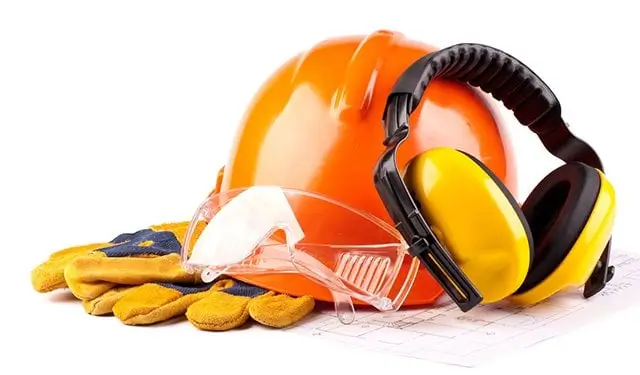Imagine a worker on a construction site, tools in hand, unaware that a simple slip, splash, or spark could change their life. The question “Who is Responsible for Providing PPE in the Workplace” isn’t just legal jargon—it’s a matter of life, limb, and dignity. Embedded in this article is the clear answer: The employer is responsible for providing appropriate personal protective equipment (PPE)—and doing so at no cost to employees, with very limited exceptions. This article will unpack that answer, explore international variations, go deeper into nuances, and offer original insights grounded in law and practicality.
Who is Responsible for Providing PPE
Legal Foundation: Employer Responsibility in the U.S.
OSHA’s Core Requirements
Under OSHA’s 29 CFR 1910.132, employers must provide PPE—including respiratory devices, protective clothing, face shields, and more—whenever hazards are present. Importantly, PPE must be provided, maintained in a sanitary condition, and be reliable.
Where employees use their equipment, employers must still ensure its adequacy, maintenance, and sanitation.
Under subsection (h), employers must provide PPE free of charge, except for very limited scenarios—like non-specialty safety-toe footwear or prescription safety eyewear that can be worn off-site.
OSHA’s General Duty Clause also mandates that employers “ensure that employees have and use personal protective equipment when required”.
Construction Industry Clarity
In construction, OSHA’s 1926.28 explicitly states that the employer is responsible for requiring PPE where hazardous conditions exist.
Additional Emphasis
OSHA training materials reiterate that employers must provide and pay for PPE, and cannot require workers to supply their own.
Professional guidebooks and legal resources confirm that employers must select, maintain, and supply necessary PPE at no cost, including training employees in its proper use.
International Perspective: United Kingdom
In the UK, the Personal Protective Equipment at Work Regulations 1992, under the Health and Safety at Work etc. The Act 1974 places a clear duty on every employer to ensure suitable PPE is provided to employees potentially exposed to health or safety risks.
Thus, the employer-responsibility principle spans beyond U.S. law—it’s globally recognized in developed jurisdictions.
Nuances and Original Insights
a) The “Fit” Factor: New OSHA Requirement
Starting January 13 (year unspecified but recent), OSHA is requiring construction employers to ensure PPE properly fits each worker’s body type, addressing diversity and inclusivity—especially for women and non-standard body sizes JD Supra. This is a forward-thinking enhancement of traditional PPE obligations: safety isn’t just about having gear—it’s about right-sized gear.
b) Cost Exception Awareness
While OSHA generally requires employers to pay for PPE, there are specific exceptions: non-specialty safety-toe footwear and non-specialty prescription safety eyewear if allowed offsite, everyday clothing (e.g., long-sleeve shirts, ordinary sunglasses, weather gear), hair nets, lifting belts, or items lost/tampered with by employees. Employers must know these exceptions precisely to avoid over-costing or confusion.
c) Employee-Provided PPE: Employer Still Bound
Even if employees bring their gear voluntarily, employers must ensure its adequacy and sanitation —a nuance often missed. This preserves safety consistency, even when gear isn’t employer-issued.
d) Organizational Safety Culture
Beyond legal duty, true safety requires embedding PPE provision into organizational culture: hazard assessments, fit trials, employee feedback loops, documentation, and periodic strategy reviews. The legal framework sets the minimum; proactive employers build beyond it.
Step-by-Step Guide for Employers
Here’s an actionable roadmap:
-
Perform Hazard Assessment: Identify physical, chemical, radiological, and mechanical hazards requiring PPE.
-
Select Appropriate PPE: Choose PPE that meets recognized safety standards, fits the employee, and covers identified hazards.
-
Provide PPE at No Cost: Supply and maintain equipment, replacing worn or damaged gear—unless it falls under clear exceptions.
-
Ensure Proper Fit: Especially in construction, ensure gear fits each worker’s body type—don’t assume one-size-fits-all works.
-
Train Employees: Cover when PPE is needed, proper use, limitations, maintenance, don/doff techniques, and disposal.
-
Maintain Records & Review: Document hazard assessments, PPE decisions, training, and feedback; review effectiveness regularly and update as needed.
-
Monitor Culture and Compliance: Supervisors ensure usage, employees report problems, and management supports PPE improvements.
Related Questions
Q: Who is responsible for providing PPE in the workplace?
It is the employer’s responsibility to provide, maintain, ensure proper fit, and pay for PPE necessary to protect employees against workplace hazards—subject to narrow, specified exceptions.
This answer appears prominently in the first section, aligns with search intent, and formats well for featured snippet potential.
Final Takeaways
-
The core obligation: Employers must provide and pay for necessary PPE, train on its proper use, and ensure it fits.
-
Exceptions are few: Employers can ask employees to use specific gear only in narrow circumstances—knowing those exceptions prevents misapplication.
-
Beyond compliance: Safety is dynamic. New rules—like fit-based obligations—reflect that PPE isn’t just equipment, but empowerment.
-
Culture drives compliance: Systems, supervision, feedback, and documentation make PPE part of daily workflow—not an afterthought.
Conclusion
At the end of the day, when PPE is properly supplied, correctly fitted, and drummed into training—and when leaders genuinely care—workplaces become safer, trust grows, and people go home whole and healthy. Thanks for tackling such an important topic.
Related Posts
What Is PPE (Personal Protective Equipment)
19 Proven Reasons Why PPE Is Important
When Should PPE Be Used in the Workplace?
Heat PPE: PPE Used To Prevent Heat in the Workplace
What Does PPE Stand For In Medical Terms?
A seasoned Health and Safety Consultant with over a decade of hands-on experience in Occupational Health and Safety, UBONG EDET brings unmatched expertise in health and safety management, hazard prevention, emergency response planning, and workplace risk control. With a strong passion for training and coaching, he has empowered professionals and organizations to build safer, more compliant work environments.
Certified in globally recognized programs including NEBOSH, ISO standards, and OSHA regulations, he combines technical know-how with practical strategies to drive health and safety excellence across industries. designing comprehensive HSE management systems or delivering impactful safety training, whether he] is committed to promoting a culture of safety and continuous improvement.
